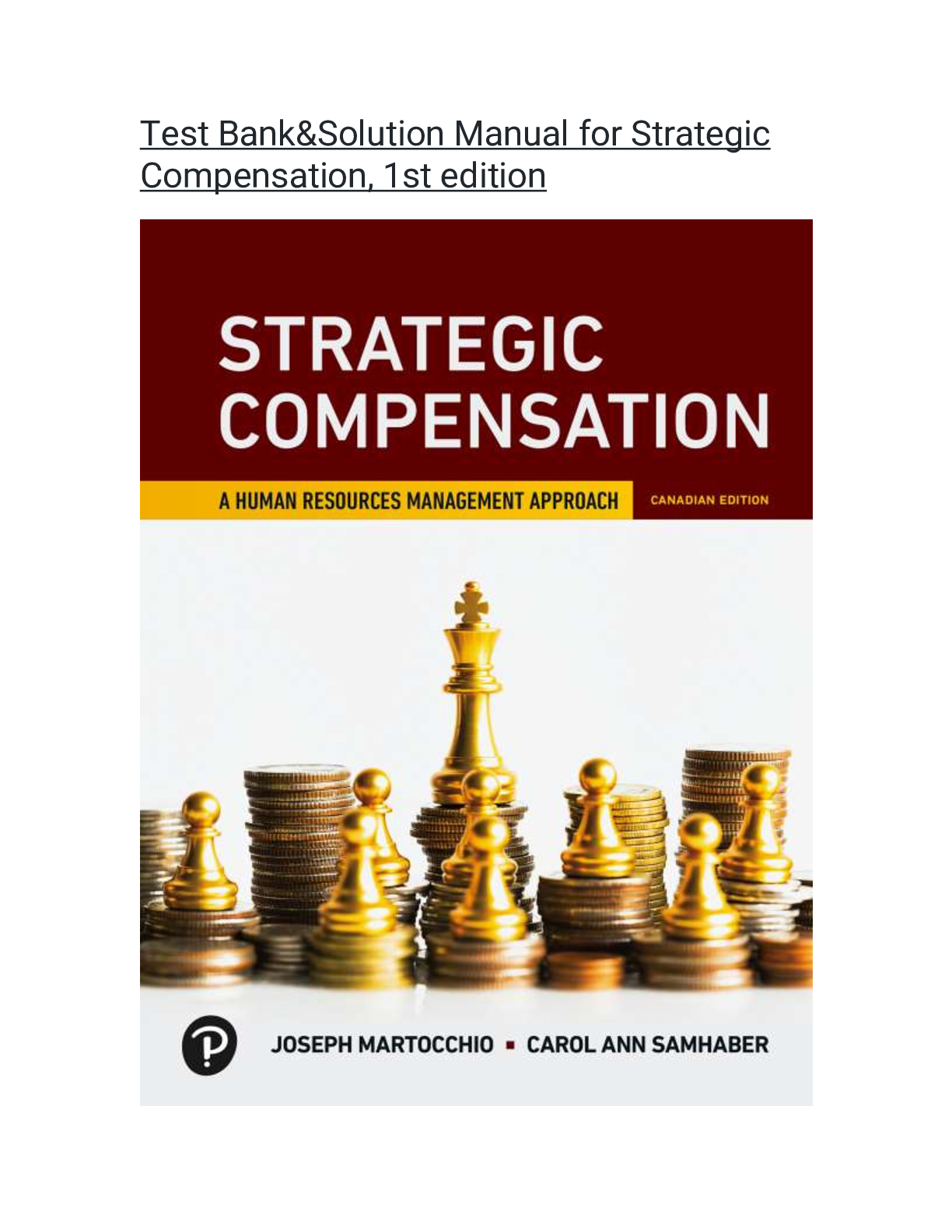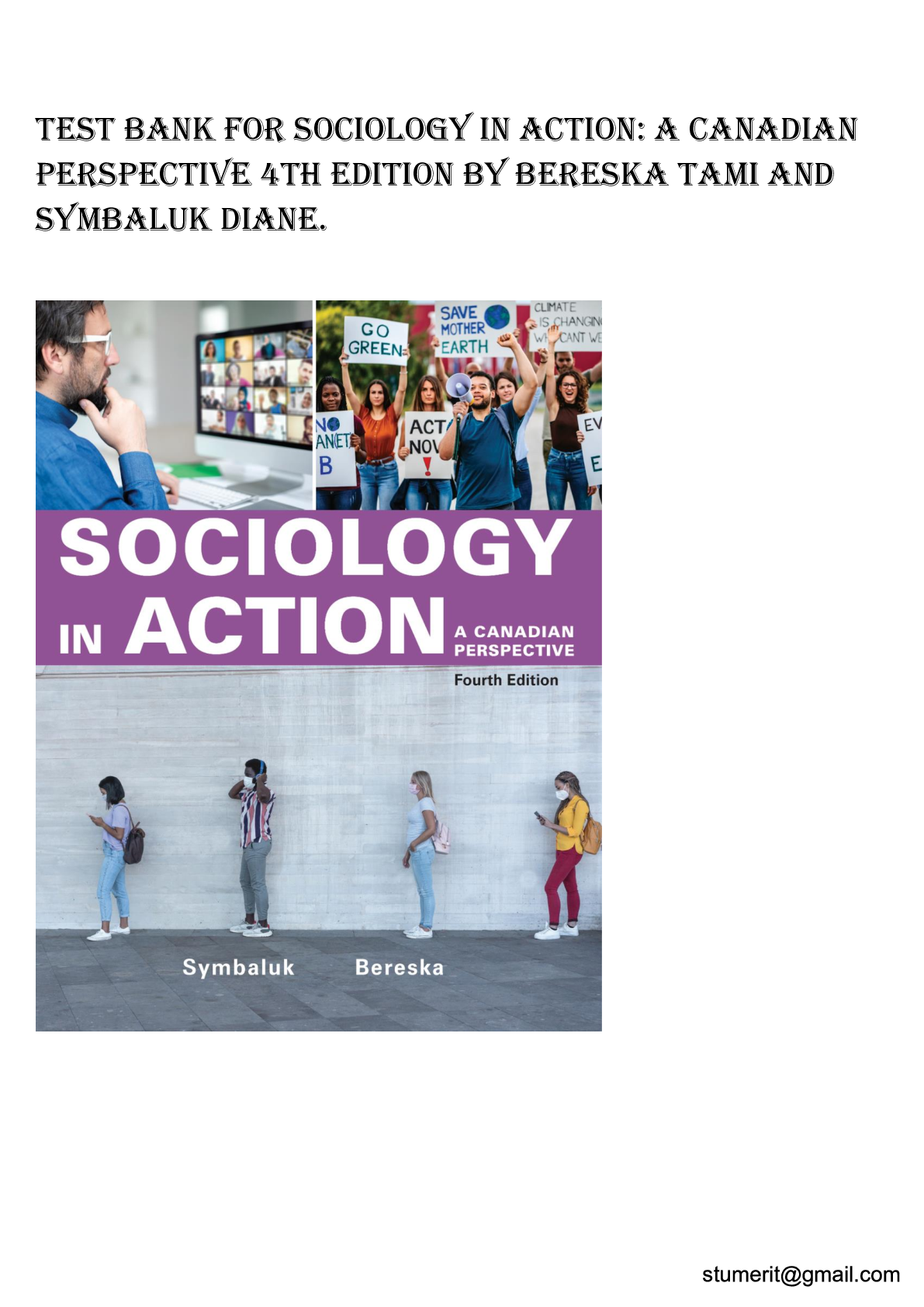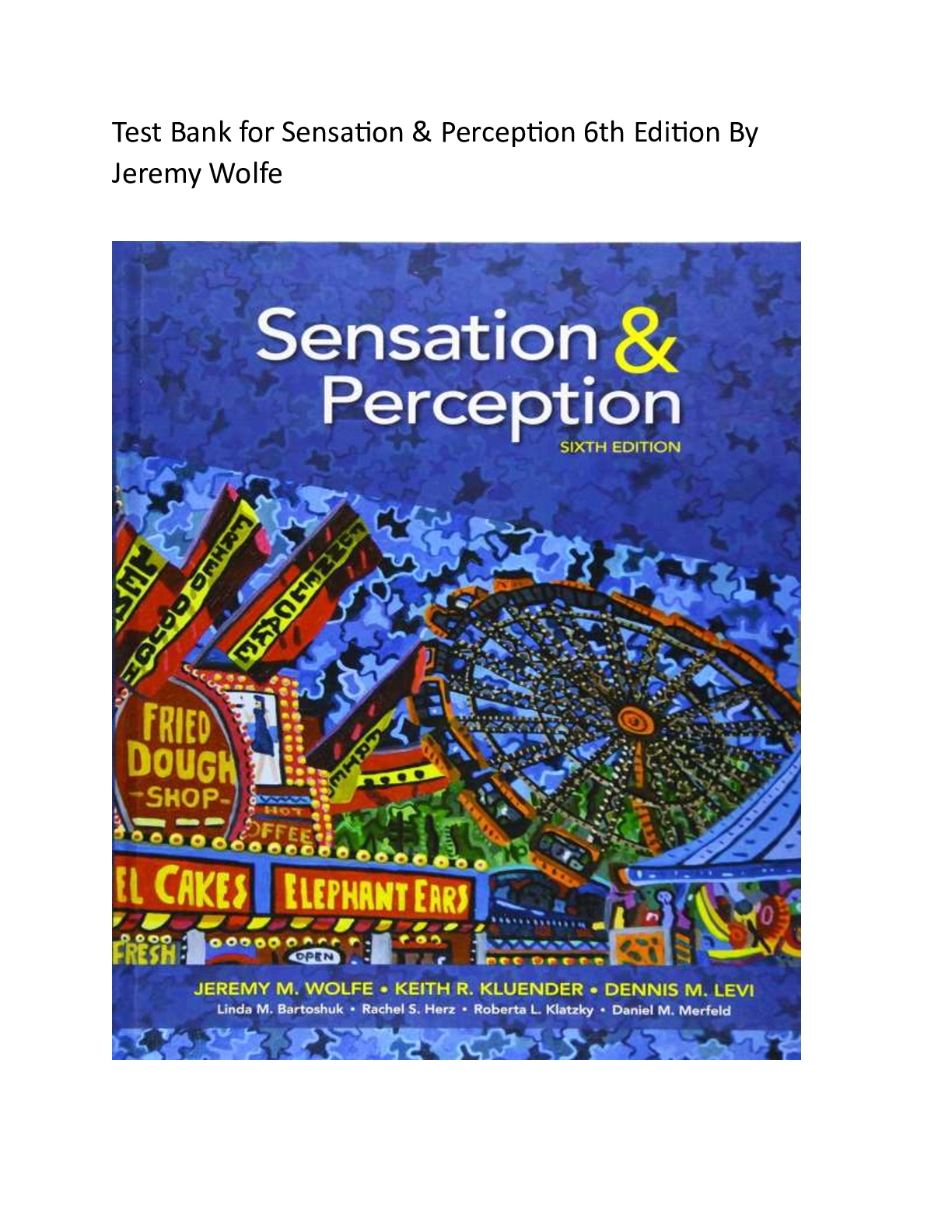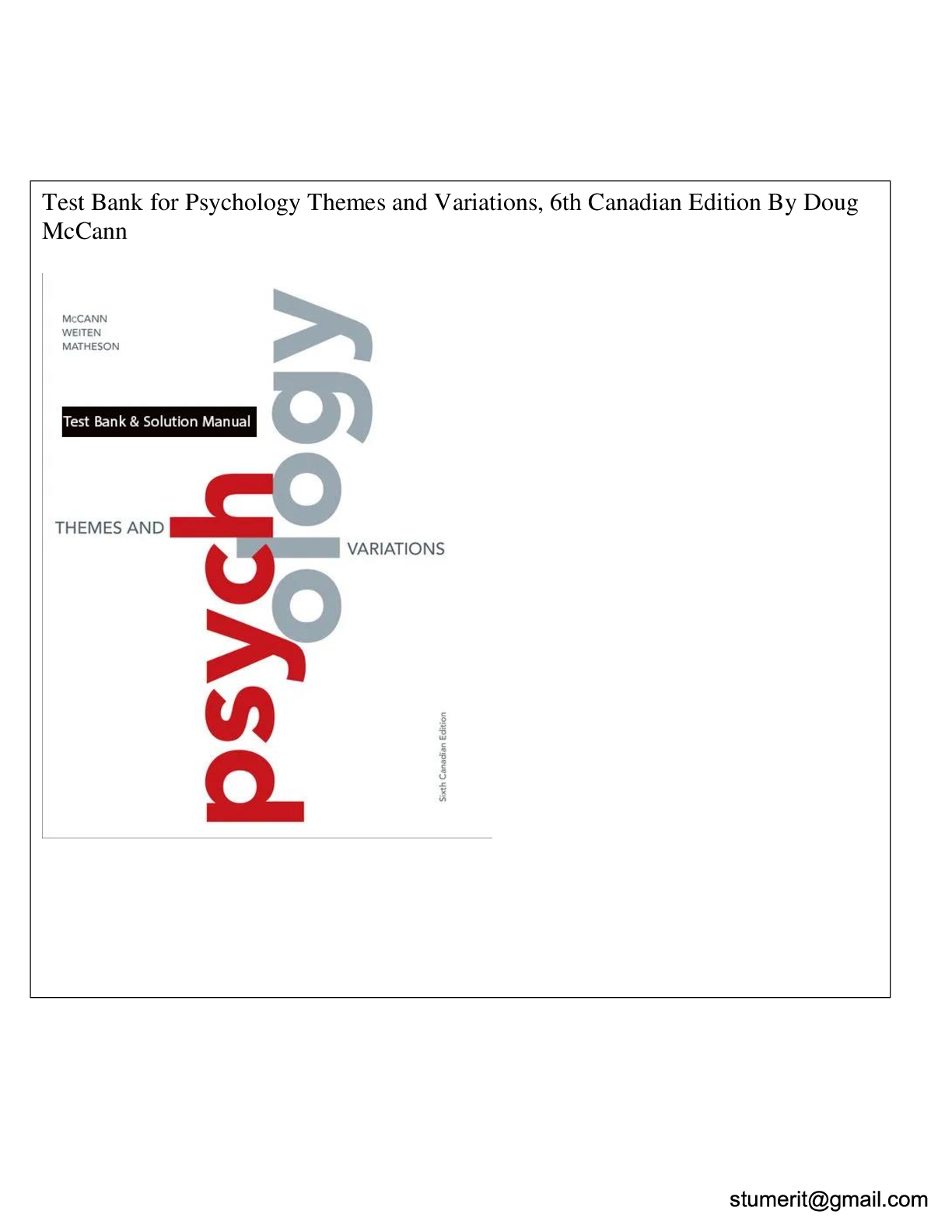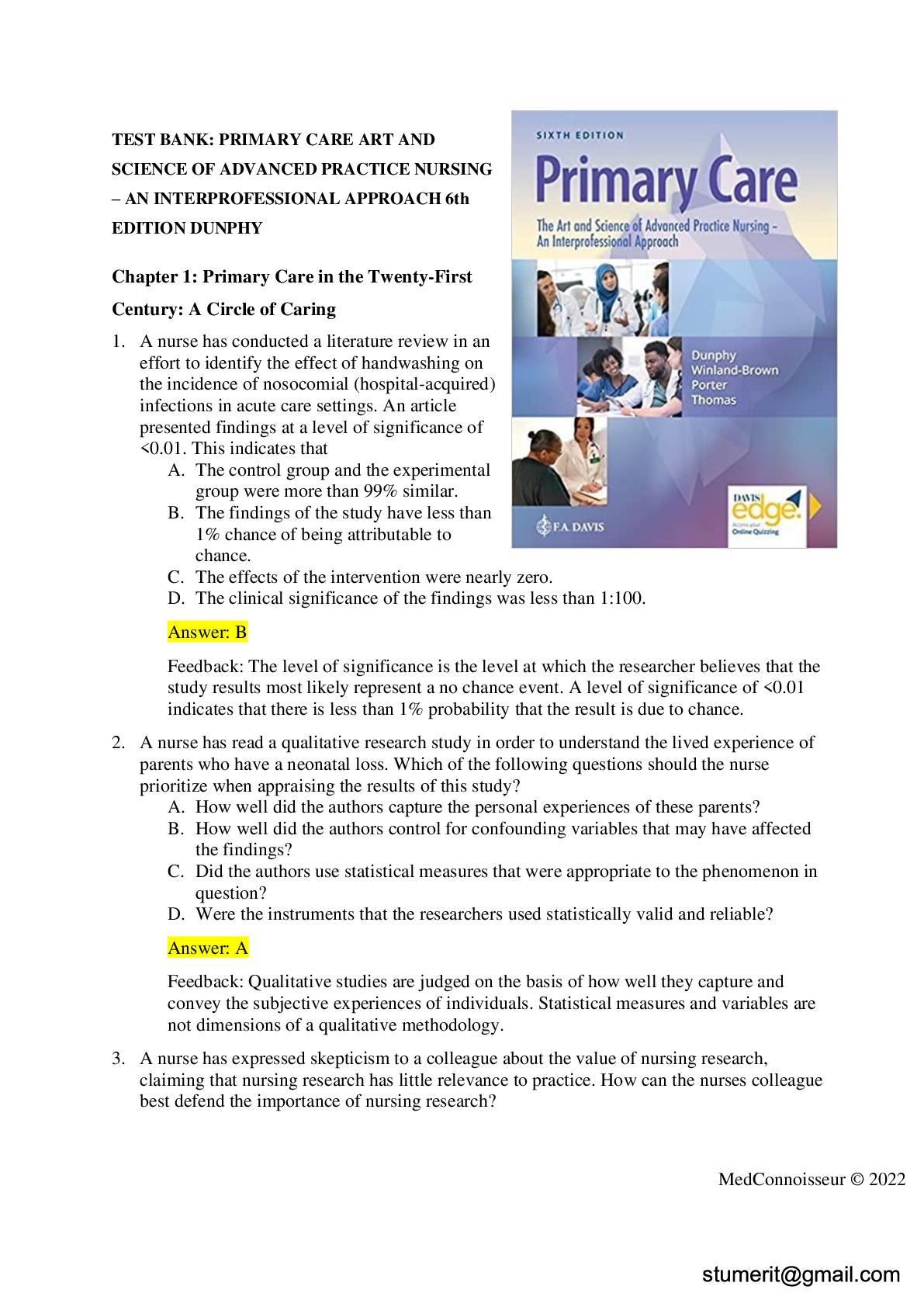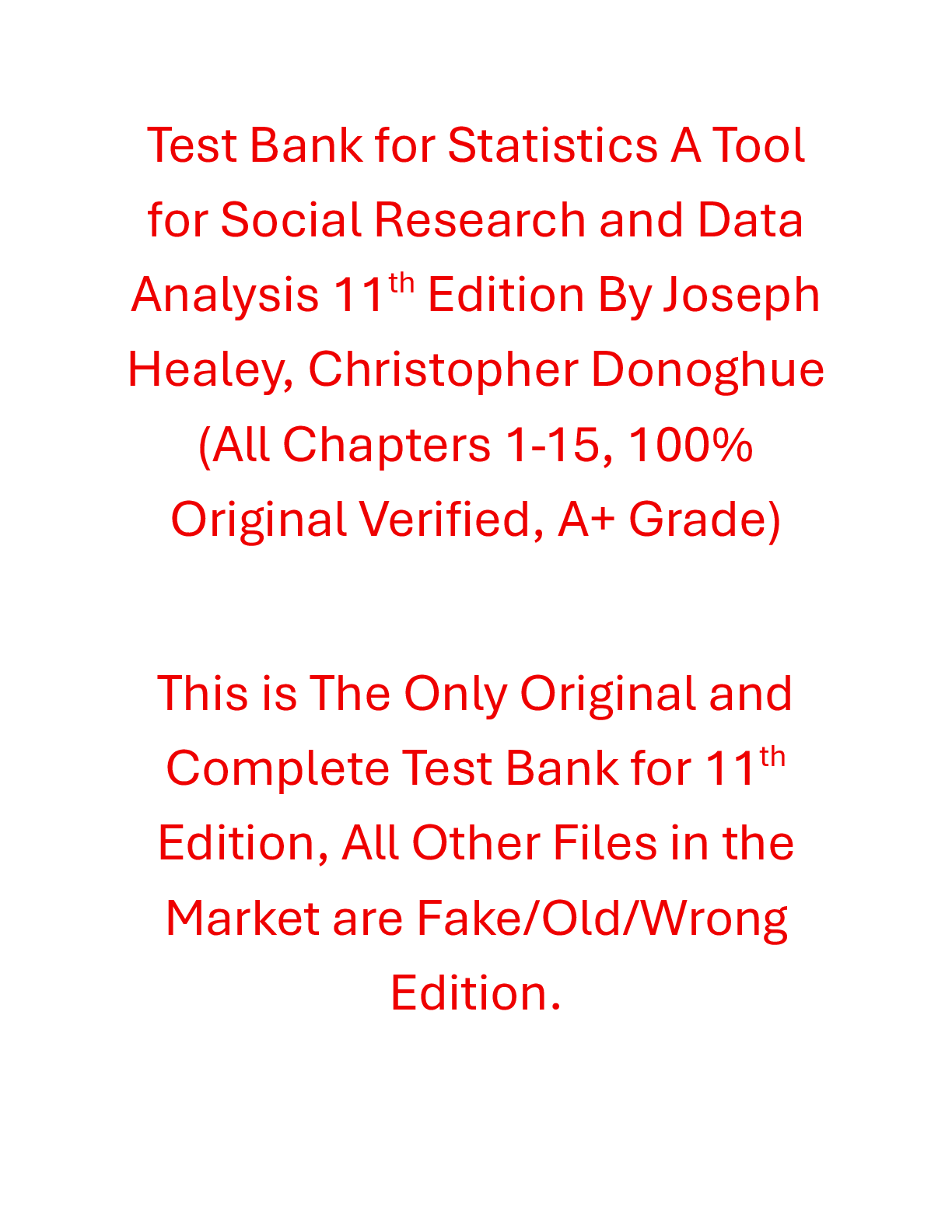Education > TEST BANKS > Test Bank and Instructor Manual For Applied Behavior Analysis Third Edition John O. Cooper Timothy E (All)
Test Bank and Instructor Manual For Applied Behavior Analysis Third Edition John O. Cooper Timothy E. Heron William L. Heward
Document Content and Description Below
Chapter 1: Definition and Characteristics of Applied Behavior Analysis Chapter Summary The word “science” is often used as a noun, conflated with its products—as in “What does science tell u ... s?”—but those products are outcomes of the behavior of large numbers of inquisitive individuals who engage in a systematic approach for seeking and organizing information about the natural world. Science really has one overall goal: to achieve a thorough understanding of the phenomena under study, which, in the field of applied behavior analysis, is socially important behavior that is meaningfully associated with an individual’s quality of life. Different types of scientific investigation yield different degrees of understanding that represent progressively greater ability to influence given phenomena. Description refers to a scientist collecting facts about entities or events, which can raise interesting questions and establish hypotheses for further study. Prediction is the outcome of more systematic observation when a scientist finds that two events often covary; when correlations are demonstrated in this manner, the probability of one event occurring can be more confidently predicted given the presence of the other event, although at this level the scientist cannot refer to the relationship between the two events as a causal one. When a scientist actually manipulates events, however, and shows that a change they make in one event (an “independent variable”) repeatedly results in some change in a second event (a target or “dependent variable”)—and when they have accounted for and reduced the likelihood that some other variable is responsible for that change— when, in other words, they have demonstrated a functional relationship between these variables, they have achieved experimental control of the phenomena being studied. Behavior analysts consider control to be the most desirable level of understanding because functional relations are the potential basis for developing applied techniques for behavior change. In this respect, behavior analysis is characterized by pragmatism, the philosophical position that the “truth” of scientific findings is to be judged by the extent to which they lead to effective action. The pursuit of scientific understanding of natural phenomena—including behavior—is characterized by an overriding set of assumptions and values: determinism, empiricism, experimentation, replication, parsimony, and philosophic doubt. Determinism—the notion that the universe is a lawful and orderly place in which all events occur as the result of other events—is the assumption upon which scientific endeavors are predicated. Indeed, if events were not determined in a reasonably orderly fashion—if phenomena randomly occurred simply as a matter of chance—then there would be no basis for viable te [Show More]
Last updated: 1 year ago
Preview 5 out of 308 pages

Loading document previews ...
Buy this document to get the full access instantly
Instant Download Access after purchase
Buy NowInstant download
We Accept:

Reviews( 0 )
$23.50
Can't find what you want? Try our AI powered Search
Document information
Connected school, study & course
About the document
Uploaded On
Dec 11, 2024
Number of pages
308
Written in
All
Additional information
This document has been written for:
Uploaded
Dec 11, 2024
Downloads
0
Views
18


